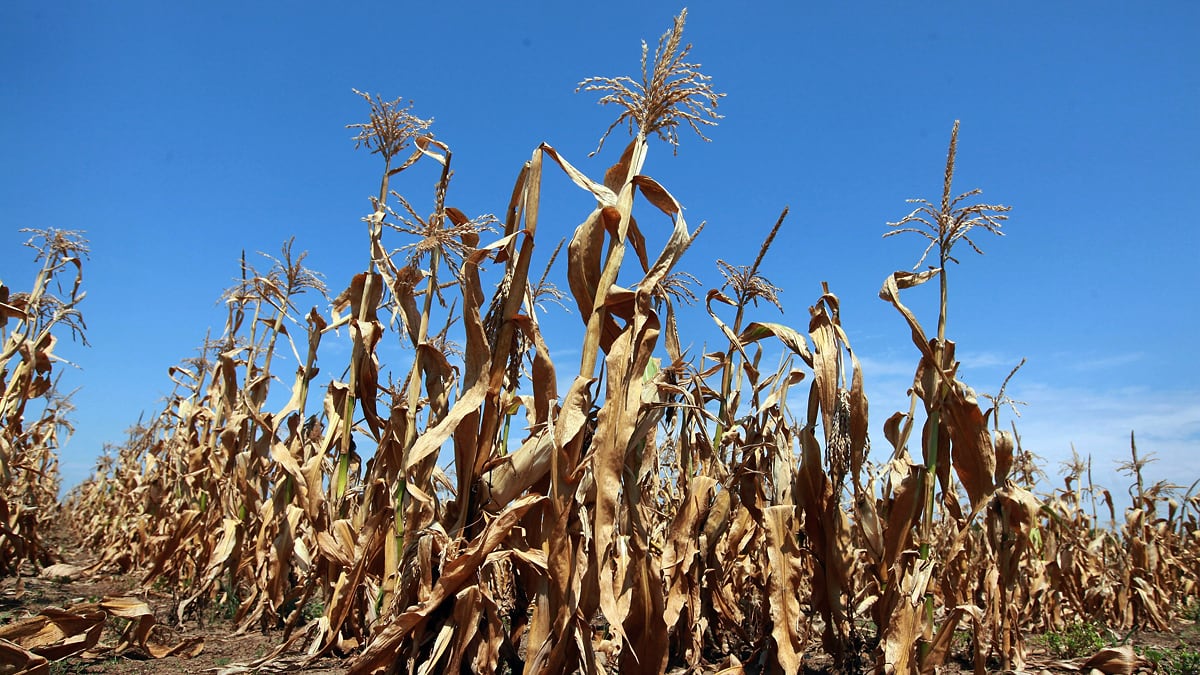Based on their understanding of how the climate system works, scientists expect that a warming Earth should see more and more episodes of weather extremes such as droughts, floods, heat waves and severe storms. The reason for more heat waves is pretty obvious. If you define a heat wave as an extended stretch of days when the temperature is well above what we now think of as normal in a month when temperatures are already high (July and August in the U.S., for example), then a generally warmer world will have more stretches like this.

With droughts and floods, the reason may be less obvious. But in a warmer world, more water evaporates from the oceans and other bodies of water, and also from the soil. So the land will tend to be drier—but when it does rain or snow, there’s more water vapor stored up in the atmosphere, so precipitation should be heavier. That could lead in turn to a higher risk of flooding. Atmospheric scientists calculate that the warming over the 20th century should have put about 5% more water vapor into the atmosphere today, on average, that there was in 1900.
Even so, it’s difficult to prove definitively that extreme weather events have increased, unless we’re talking about averages over the entire globe, or at least over very large regions. That’s because the most extreme events—the worst storms, droughts and floods—tend to come less often than ordinary events. Climate and weather scientists talk about “100-year floods,” for example, meaning a flood so big it should happen s about once in every 100 years (or 10 times in a thousand years), on average, in a particular location.
But that’s only an average, so if you have two such floods in a 100-year period, does that mean the risk has doubled, or maybe that you are now “ok”safe for the next 200 years? Or is it just a statistical fluke, similar to flipping a coin and getting two heads in a row just by chance? It can be hard to tell. It’s even harder when you don’t have good measurements over the past century in all parts of the world, and when different parts of the world respond to climate change in their own ways.
Even today, with much better monitoring, it’s a challenge for scientists to gather enough information to draw firm conclusions about long-term trends over large regions. It’s more difficult still to say anything concrete about the role of climate change in single events. No single event, such as the deadly heat wave that hit Europe in 2003 or the 2010 floods in Pakistan or heat and wildfires in Russia can be definitely blamed on climate change: we think that climate change has made events like these more likely, but they could have happened anyway.
For single events like these, the best scientists can do is calculate whether climate change has tipped the odds in favor of such events happening—whether the coin you’re flipping has become slightly loaded in favor of tails, for example. A study published in 2005 showed just that kind of loading for the European heat wave of 2003.
As for general trends, here’s what the Intergovernmnental Panel on Climate Change (IPCC) said about extreme weather: “Globally, the area affected by drought has likely increased since the 1970s…It is likely that heat waves have become more frequent over most land areas....It is likely that the frequency of heavy precipitation events…. has increased over most areas. It is likely that the incidence of extreme high sea level has increased at a broad range of sites worldwide since 1975.”

The word “likely” in the IPCC report means that there’s at least a two-thirds probability that something is true—meaning that while its higher than 50-50, there’s still a sizable uncertainty, for the reasons explained up above. What scientists can say is that events like this should happen more often in a warmer world. If our planet continues to warm as scientists expect—and as our record of observations gets longer and more comprehensive—scientists will be able to make more definitive statements.
But they’re also trying to do better with the information they have today. Using special statistical techniques designed to look at extreme events, scientists have done studies, published after the last major IPCC report on global climate, in, to look at changes in extreme temperature and precipitation events over large areas of the world. They’ve detected evidence of a human role in these changes. However, it’s still very hard to say anything definitive about the human fingerprint on specific, local types of extreme weather.
Excerpted from Global Weirdness by Climate Central. Copyright © 2012 by Climate Central, Inc.. Excerpted by permission of Pantheon, a division of Random House, Inc. All rights reserved. No part of this excerpt may be reproduced or reprinted without permission in writing from the publisher.






